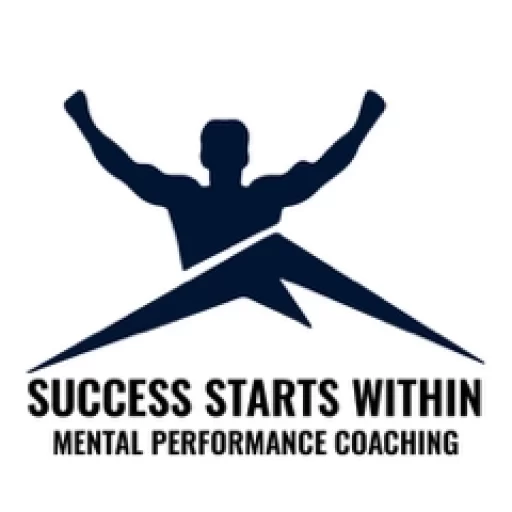You’re walking to the plate and your mind’s racing.
Striking out, letting your team down, your average, people watching, the runner on second base, your mechanics…all sorts of thoughts are running through your head.
But are they helpful?
Thinking too much, and especially worrying too much, is one of the most common challenges baseball and softball players come to me for help with.
They think too much at the plate, their mind isn’t calm, and as a result, they struggle.
Their hitting in games doesn’t match how good of hitters they actually are.
Well, it doesn’t until they get a handle on these racing thoughts and build the skill of hitting with a calm mind.
And that’s exactly what you’ll learn how to do by the end of this article.
The Trouble With Overthinking at the Plate
You want to be a smart hitter. But at what point does your mind stop being an asset and turns into the very thing keeping you from hitting your best?
When your thinking turns into overthinking and you can’t quiet your mind when you step into the box.
This is one of the most common challenges I see hitters faced with.
They overthink everything, from mechanics to what pitch to sit on.
But overthinking keeps you from being relaxed. And a relaxed hitter is a dangerous hitter.
Relaxed, both physically and mentally.
And the truth is, it’s difficult to be physically loose and relaxed in the box if your mind is racing all over the place and full of stressful and worrisome thoughts.
If you find yourself hesitating, second guessing, freezing, or completely stiff at the plate, your mind is the first place you need to look.
Overthinking, Performance Anxiety, & Hitting
Has a coach ever told you to stop thinking so much at the plate? If so, have you ever stopped to wonder why you think so much in the first place?
Especially when you know it’s not helpful…or you’ve at least been told so by your coach.
My guess is, because you aren’t trying to overthink at the plate. It just happens.
Racing thoughts shoot through your mind, going from one thing to another.
What will my average be? I have to get a hit. What has he been starting hitters off with? I’ll show coach I can hit. I can’t strike out.
Any of those sound familiar?
They speed through your mind like a bouncy ball stuck in a small square room, going from one wall to the next. Bouncing this way and that with no direction. And no control.
That’s the essence of sports performance anxiety…experiencing uncontrollable racing thoughts that are fixated on future worries.
And what does worry cause?
Fear.
The more you think about what you’re worried about, the easier it is to fear the negative outcome happening. This results in a need to control the outcome.
However, you cannot fully control the outcome of an at bat. Otherwise you’d be hitting a thousand. In fact, everyone would and that wouldn’t make for a very fun game.
But since you can’t control the outcome, this only worsens anxiety and generates more overthinking. Because overthinking feels like control in the moment.
So you overthink. You worry. You stress.
But you can’t overthink yourself to being a great hitter.
But I can guarantee you can overthink yourself into being a below average hitter.
Being a hitter who leaves games continually frustrated because you know you performed well below your potential.
Calming Your Mind While Hitting
I was talking with a player yesterday in a one-on-one session and he and I were going over this idea of competing with a calm mind.
One of his hesitations to the idea of a calm mind was he didn’t want to be slow.
He was afraid a calm mind would mean a dull mind and a slow body.
But the opposite’s actually true.
When you overthink and your mind is full of anxious thoughts, your reaction time is delayed. This is where you find yourself hesitating and second guessing.
You let that fastball go by that was right down the middle and you’re not sure why…
A calm mind, on the other hand, makes you sharper.
Your mind is clear, your body is relaxed, but you’re still focused and activated and ready to go.
In fact, you’re even more ready.
Think of a calm mind like a calm ocean and an anxious and overthinking mind like a stormy ocean. Which would you rather sail through?
Well, maybe you say neither because you’re not much for sailing. But if you had to choose, it’d for sure be the calm ocean. That’s the safer option, of course, but it’s also the option that would give you the best chance of getting to your destination.
Just like a calm mind gives you the best chance of getting a hit.
Hitting is hard enough…don’t make it even harder by overthinking.
But I know how hard it can be to stop. And how out of your control your thoughts can feel, especially when you’re in the box.
Which is why you need a strategy.
Strategy to Calm Your Mind While Hitting
The most success I’ve had when working with hitters on calming their minds at the plate has come through routines.
Pregame routines, pre at bat routines, post at bat routines, they all help and are the best way I’ve found to go up to the plate with a calm mind.
Especially in those big moments when there are runners on, it’s a close game, and you need to get a hit!
Routines give you consistency and control over your mindset.
What I’m going to do is explain all three routines – pregame, pre at bat, and post at bat – and the best tools you can use within each routine.
Pregame Routine
The mindset you’re in to start the game will carry with you throughout the game.
Which means, the best way for you to hit with a calm mind is to start the game off with a calm mind.
I like to break pregame routines down into two different phases: the night before phase and the day of phase.
The Night Before
The night before a game you want to be getting your mind ready for the competition the next day.
This doesn’t mean you need to get yourself all serious and stressed out the night before. That would be counterproductive to our goal of beginning the game with a calm mind.
Instead, the night before you should have three goals in mind: prepare for the game, build confidence, and relax.
And preferably your routine should follow that order.
For the preparation part, this will involve researching your opponent and creating a game plan.
Now you want to be careful here…you need to be honest with yourself as to how much information is helpful and at what point information only worsens your overthinking.
As hitters, the type of research you should be doing involves the pitcher you’ll face the next day (if you have access to this type of data).
What pitches do they throw? What do their pitch paths look like (some video would be needed here)? What is their go to pitch when ahead in counts versus behind in counts?
These are all great things to research, but only if you feel like they’ll help you.
I’ve worked with great hitters who don’t like to know anything about the pitcher. Any information only triggers overthinking. They thrive on going up to the plate, trusting themselves, and reacting.
I’ve also worked with great hitters who love to research the pitchers they face.
The choice is up to you, since you know yourself best. But the night before phase of a pregame routine is a great time to go through this type of research and preparation.
The next part of the routine involves building confidence for the next day. There are two tools you can use here: visualization and self-talk.
You can use both or simply one of them to begin generating belief and trust in yourself for the next day.
The last part of the night before phase should be where you get yourself relaxed. Here you want to try and take your mind off the game.
Relax with your friends, watch a movie, enjoy a good meal, do some mindfulness meditation before bed.
The goal is to let go of any worries about the game the next day.
You’ve prepared physically and mentally, you’ve strengthened your confidence, now it’s time to let go and relax.
The Day Of
The second part of your pregame routine is the day of phase. This is what you’ll do the morning of the game and or right before the game begins.
For this part, you still want to build confidence and relax/calm your mind. But we’re also going to add some tools you can use to get focused and locked in for the game.
Because remember, a calm mind is not a dull mind. It’s a mind that has a singular focus and is not full of racing thoughts.
Here are a list of tools you can use for the day of phase of your pre game routine:
- Self-Talk
- Visualization
- Mindfulness Meditation
- Remembering Past Successes
- Setting A Clear Objective
Of course these are all mental tools. Whatever you currently do physically before games as part of your routine, you want to continue doing so.
I want to talk a little more about the last tool on the list, setting a clear objective.
This is where you will decide what your performance objective will be for your at bats.
A performance objective is also known as a process goal. It’s a cue or target you want to focus on that is 100% within your control.
It’s one of my favorite tools to use for hitters struggling with performance anxiety.
Because it zeros in your attention and forces you to focus on one thing. By focusing on one thing, you allow your muscle memory to take over instead of trying to force a hit.
This is a key part of hitting with a calm mind.
Within your pre at bat routine, you’ll remind yourself of your objective again once you go up to bat. But you want to already know what it will be, which is why you need to set your objective before the game.
Here are a few examples of some objectives hitters I’ve had hitters use:
- Focus on the ball.
- Stay balanced at the plate.
- Let the ball travel.
- Stay aggressive and attack.
- Be slow and smooth.
You see how simple those are?
That’s the point!
We are trying to counteract overthinking. You can’t counteract overthinking by thinking anything complicated. You have to simplify your thinking.
The truth is, you know how to hit. You don’t have to do anything special or new when you step up to the plate.
You simply need to allow yourself to react and hit.
If you aren’t hitting as well as you’d like, chances are your mind is getting in the way. You’re thinking too much!
A hitting objective simplifies your thinking and frees you up to just hit!
Pre At Bat Routine
The next step in getting you to hit with a calm mind is your pre at bat routine.
What are you doing right before you go up to bat?
More importantly, what are you thinking about?
Beginning from the time you’re in the hole, everything you think about and do needs to be geared towards putting you in the best position to have a good at bat.
Especially since this is the most common time for worries and fears to fill your mind.
Your pre at bat routine will be broken into three parts: in the hole, on-deck, and walking up to bat.
In the Hole
Here you begin your at bat.
You go from cheering on your teammates to getting yourself zoned in and ready to hit.
There are two tools that are perfect for this part of your routine: visualization and remembering past successes.
Remembering past successes is the simpler of the two options. All you do is begin thinking about good at bats you’ve had recently as a way to increase your confidence and get yourself seeing success.
Because the last thing you want to do (and what can quickly lead to overthinking) is imagine getting out and being afraid of getting out.
The other tool is visualization.
With visualization, what you’ll do is close your eyes and go through your upcoming at bat in your head.
Imagine the different pitches the pitcher throws, see the pitch paths, and see yourself getting a hit.
By using either one of these tools, your confidence and focus start to increase for the upcoming at bat.
On-Deck
As I’m sure you’ve been told many times by coaches, the on-deck circle is where you need to be timing up the pitcher.
That’s 100% true!
But we’re going to add something else to that…two things actually.
Self-talk and breathing.
As you’re timing up the pitcher and going through your at bat before your at bat, begin repeating positive self-talk statements.
Some great ones include:
- I am a great hitter.
- Focus and attack.
- I’m going to get a hit.
- I am better than the pitcher.
- I’ve got this.
Simple statements that fill your head with confident thoughts.
Because the more confident thoughts you have, the less anxious and fearful thoughts you’ll have. Meaning…your mind will be calmer.
While you’re repeating confident self-talk statements, make sure you’re breathing nice and deeply.
It’s easy to have your breath become shallow when you’re anxious. But these shallow breaths only make the anxiety worse.
Take nice rhythmic breaths. Be smooth with your breathing. After all, hitting is all about rhythm!
Walking up to Bat
At this point, you’re ready to hit!
You’ve done your visualization/remembering past successes. You’ve timed up the pitcher. You’ve filled your head with positive thoughts and you’re taking deep breaths.
Now it’s time to simplify even more.
Remember the objective you set during your pregame routine? As you walk up to bat, remind yourself of that objective. Keep repeating it over and over again to simplify your thinking.
Get your sign from coach, take one more deep breath, repeat your objective again, and lock onto the pitcher.
And then…react!
Post At Bat Routine
What you do after your at bat will affect your next at bat.
Have you ever had a bad at bat, gotten upset, and then struggled your next at bat because you couldn’t let go of the last one?
This happens because you may be afraid of getting out again, or you press more because of how badly you want to get a hit and make up for the last at bat.
Either way, you’re not in a calm mindset.
Instead, you want to take what you can from the at bat in the form of lessons and adjustments and then let the at bat go as fast as possible.
That way, you can go up to your next at bat with a clear mind…like the last at bat never happened.
This is even true if you had a great last at bat.
Let’s say you hit a home run. You’re feeling great and the ball looks like a beach ball that day…but all of a sudden you get the thought that you need to keep up your success and you should get another hit.
Now, instead of allowing the home run to boost confidence, you put unnecessary stress and pressure on yourself.
Ultimately, you want to approach each at bat like a brand new at bat…because it is.
The best way to do so, along with using a pre game routine and a pre at bat routine as we’ve already discussed, is to use a post at bat routine.
This consists of a couple questions you ask yourself following the at bat (if you get a hit, this will be once you’re back in the dugout).
And yes, you want to use this post at bat routine even when you get a hit. Not just when you get out.
The two questions are:
- What did I do well that at bat?
- What can I learn from that at bat?
Simple, but effective!
The first question can be tough to answer if you just struck out or rolled over. I get it. But you need to be disciplined and force yourself to answer.
Answering the first question will put you in a bit of a better mindset to answer question two in a productive way instead of immediately tearing yourself apart.
What can I learn gives you the opportunity to think about why you got out and what adjustments you can make before your next at bat.
Do you need to be more aggressive early in the count? Do you need to wait back more?
Going through this process helps you let go of at bats quicker, and take something valuable from them to help with your next at bat.
And the routine helps to put you on the path to going up to your next at bat in a calm mindset.
Final Thoughts
Hitting is hard.
Don’t make it even harder by overthinking at the plate.
It’s natural to overthink and to stress, especially if you haven’t been hitting all that well recently.
But the reason you haven’t been hitting great may very well be due to overthinking.
When you hit, you want to get out of your own way and allow yourself to simply react.
You’ve put in the work, you’ve taken reps off the tee and in the cage, now allow all that work and your muscle memory to take over.
And the best way to allow muscle memory to take over is to have a calm mind when you step up to the plate.
Hitting with a calm mind isn’t always easy, but it is something you can work for.
Work for being the key phrase!
And the way you work to hit with a calm mind is by utilizing routines.
Take the routines I outlined above and put them into practice. Use the tools I provided or any others that you may have found success with in the past.
The most important part about all of this is staying consistent with your routines.
They aren’t a quick fix. The more you use them, the better they will become, and the more impact they will have on helping you hit with a calm mind.
Thank you for reading and I wish you the best of success in all that you do.





